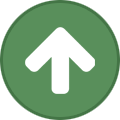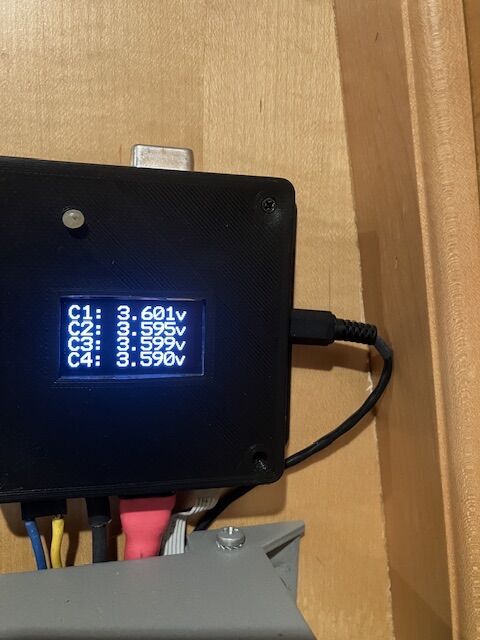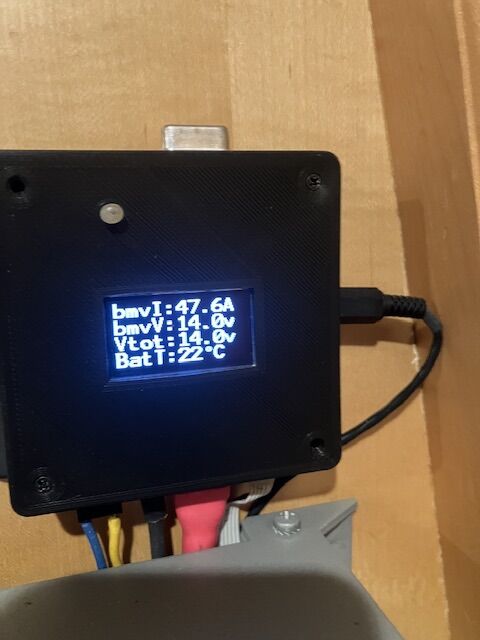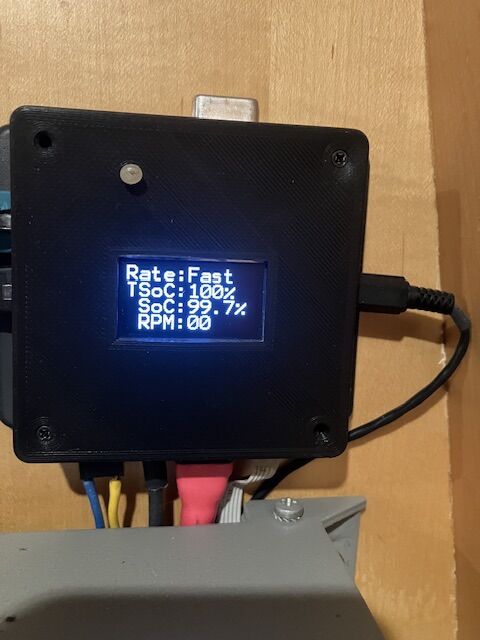-
Posts
23,306 -
Joined
-
Last visited
-
Days Won
119
Content Type
Profiles
Forums
Events
Gallery
Blogs
Store
Everything posted by nicknorman
-
My point was not to tell you that you must comply with the letter of the law. You are a big boy (so they say) and have a good dollop of experience and common sense. My point was that when giving advice to questioners on here, it is advisable to stick with best practice. Best practice being designed to cope with a low common denominator. Someone coming on here to ask questions is doing so because they don’t have the experience / competence to know the answers and we can’t know what other factors might be present to turn some minor bodgery into disaster.
-
Even though failing to meet the ISOs and then stating that the boat is RCD/RCR compliant is most likely a very common issue that has probably never been prosecuted on canal boats, IMO people on the forum should not be advocating ignoring best practice as per the ISOs. It is irresponsible. Just because one has done something that contravenes the ISO and has “got away with it” - ie not had a problem as a result YET, does not give that experience any credence in a world with thousands of people and boats. Accidents usually happen due to a combination of unfavourable circumstances, and reducing safety margins in one seemingly trivial area can have unintended consequences when combined with other unanticipated factors.
-

Are these reliable? Two-way grey water manifold.
nicknorman replied to Baralacha's topic in Boat Building & Maintenance
I think you might struggle to install it low enough so that shower water reaches the manifold by gravity in order to activate the pump. Most shower waste outlets are virtually on the baseplate. And if it fails, sink water may flood the bathroom. -
Yes I am not clear about this and it is a bit late to get my head around it but anyway I see I mis-wrote. What was actually written was degC/min-Ah. I'll edit my earlier cockup. But that little detail aside (!) my point was about the differences between LFP and the more energy-dense chemistries, around a factor of 100.
-
I've recently gained access to British Standards online, giving me access to the latest version of "small craft - lithium-ion batteries. Most of it is pretty sensible and I am compliant eg with things like "Charging sources shall be operated/controlled to meet the charging profile recommendations provided by the lithium-ion battery or cell manufacturer." which I would take to mean that relying on the BMS cutoff to ensure safe charging, is not acceptable. But relevant to the discussion about battery abuse, the BS makes reference to a paper "Investigating the Role of Energy Density in Thermal Runaway of Lithium-Ion Batteries with Accelerating Rate Calorimetry" which is freely available on line. There is a graph of thermal runaways with different chemistries. First of all it is interesting that thermal runaway only really "takes off" when the temperature gets over 200C (or 180 for LiCoO2). Which is quite hot. But once thermal runaway is in full swing, LiFePO4 suffers a rate of (adiabatic) temperature rise of around 2 or 3 degC per minute-amphour. Whereas the likes of LiCoO2 is around 400 and NMC around 170. So there is a massive difference between the rate of energy released by LiFePO4 vs these other chemistries. I know that we knew that, but it's good to see the hard data.
-
What very different outcome do you envisage? For a LiFePO4 battery it would have been a much better outcome- the BMS would have isolated the battery with no damage occurring. This is the thing with Li batteries, there are two levels of protection, the charger’s regulation AND the BMS. With lead acid there is only one. But even with the double failure of charge regulation and BMS, chances are the LiFePO4 battery would have suffered a similar fate to the LA - been badly damaged. But not gone on fire nor risked spraying boiling sulphuric acid around.
-
I would strongly recommend reviewing the BSS inspection criteria before starting. https://www.boatsafetyscheme.org/media/299451/bss-complete-ecps-private-boat-public-version-2023.pdf For example the boatyard is quite correct, the starter must go through the engine battery isolator ditto the alternator. It is not that one needs to isolate the battery from the engine, it is the other way round ie isolate the engine electrics from the battery (source of a lot of energy). If someone is working on the engine they don’t want an accidental touch of eg a spanner on the starter stud and the engine casing, to short circuit the battery, melt the spanner and spray molten metal in their eyes. If you just rewire it your way, it may fail the next BSS check and you would have to redo it. Most boats have 2 isolator switches, one for the domestic and one for the engine batteries.
-

Gas oven and grill issue
nicknorman replied to rustypaperclip's topic in Boat Building & Maintenance
There are a few possible different technologies for flame failure detection, one is a thermocouple that gets heated, a small voltage is produced that keeps the gas valve open. It takes a few seconds for the thing to be heated enough. If the flame isn’t really playing on the probe, or the probe is generally “tired” then it can be slow or malfunction. As mentioned, if the flame isn’t playing on the probe this is usually because something is upsetting the flow of gas and/or air. Dirt or corrosion in the jet and burner. Another technology is a flame conductivity check - an electrode is bathed in the flame which also reaches the metal of the burner. The flame is a plasma which is highly conductive and the system detects low resistance and keeps the gas valve open. This type of system needs a power supply (battery or supply from the boat) , whereas the first I mentioned doesn’t. The latter generally uses the sparking (lighting) electrode as the flame probe, and the flame shape is more critical than the thermocouple as the flame has to touch both the electrode and the burner metal. But again, dirt and corrosion in the jet and burner are usually at the root of the problem. -
You can lock up from the river to Stourport basin using either the wide locks or the narrow ones. They are in parallel. Narrowboats should use the narrow locks to save water. But the Staffs and Worc after Stourport basin is narrow only so you can’t go beyond the basin.
-
No I didn’t. The IR is very small and I can’t see that there’s much variation. Probably more variation in the interconnect / connection resistances. And also IR is made up of at least a couple of things, one being the ohmic resistance and the other being the “chemical resistance” ie the reaction rate. Even if the former is fairly static, the latter won’t be - varying with temperature, and non-linearly with load. Possibly it might be relevant if one was operating the cells at 1C rates or higher, but the max I get to is about 0.35C and that only for short periods (electric kettle), so I can’t see that slight variations in IR are going to be consequential.
-
At a loose end on the boat today in the marina so I thought I’d take the battery up to 100% again to see how the balancing is. And also to demonstrate that balancing is only appropriate right at the top. The following pics taken of the BMS display during the very late stage of charging. In the first pic you can see the cell voltage order is 1,2,3,4 And so you might think that cell 4 needs a bit taking out of it. Also of note is that the battery is now 99.7% SoC and yet the voltage is not that high yet - see other screens from BMS.The last bit of voltage gives very little extra charge… But right at the end, the cell voltage order is quite different at 4,2,3,1. So the lowest cell from before is now the highest, and vice versa. So if anything cell 1 needs a bit taking out, although the split of 11mV is below my threshold for activating balancing.
-
It goes with the territory of being a human being evolved from cavemen when anyone not in your clan was the enemy as they competed for your food and women. Some people struggle to move on from their ancient ancestors! We got the same kind of prejudice about our choice of boat builder, even though he made great boats and I have never encountered an “up themselves” owner.
-
Exactly what I was thinking.
-
Possible yes, but not normally unless very high usage. I’d say more like 10 years between repacking as an average with moderate use. I think you over-analysed my thinking a bit! If you have 2 pack blacking as we do, the boat comes out every 5 or 6 years. But my point was really that repacking is a trivial expense unless you also have to get the boat out of the water to do it.
-
Yes. Be aware that the packing comes in different sizes and you can get graphite-loaded or normal. Check the position of the pusher/stud length protruding and make a judgement call as to whether to repack. Since it is much easier to do this out of the water, and cheap, I’d suggest doing it anyway if it’s more than about 1/2 worn.
-

How to orientate the split pin at the end of prop shaft.
nicknorman replied to Gybe Ho's topic in Boat Building & Maintenance
No I don’t think it was rubbish, the point about the castellated nut (or its absence) was cogent. I think the point is to try to avoid the nut being able to rotate a bit, which could cause fretting especially in an application where the direction of rotation / load reverses. Whether the tangs are bent circumferentially or radially is not significant since the bending is only to stop the pin from sliding out and there is no significant force trying to make that happen - in fact the offset mass of the pin is only going to pull it in when rotated fast. But locking things subject to heavy load only by means of a split pin isn’t great design, the primary means should be friction and bolt stretching, which admittedly is tricky with a fairly short “bolt” and dissimilar metals (with different thermal expansion coefficients). But fortunately the tapered shaft adds plenty of friction! -

How to orientate the split pin at the end of prop shaft.
nicknorman replied to Gybe Ho's topic in Boat Building & Maintenance
Quite possibly, hard to see from the photo. But my point wasn’t about the micro detail of that particular pin, more about the principle of the orientation of the pin. I didn’t make that clear, but it was the premise of the question. As you say, of course the pin should be the right size (snug fit) for the hole, and spilt pins shouldn’t be reused. All that said, it has obviously had some use and hasn’t come adrift so it is probably adequate for the purpose. -

How to orientate the split pin at the end of prop shaft.
nicknorman replied to Gybe Ho's topic in Boat Building & Maintenance
Speaking as a licensed aircraft engineer, I would say that there is nothing wrong with the way the split pin is inserted. An alternative way is to have the folded head of the pin rotated 90degrees and then one leg of the pin is bent back over the end of the shaft, the other has to be cut right down and is poked back towards the prop. But the bending is only to stop the pin sliding out. With the latter method the head does tend to sit in more neatly into the nut slot, but in terms of security it makes no odds. As mentioned it’s a safety locking thing, not the primary means of avoiding the nut undoing - the latter being achieved by tightening the nut!








